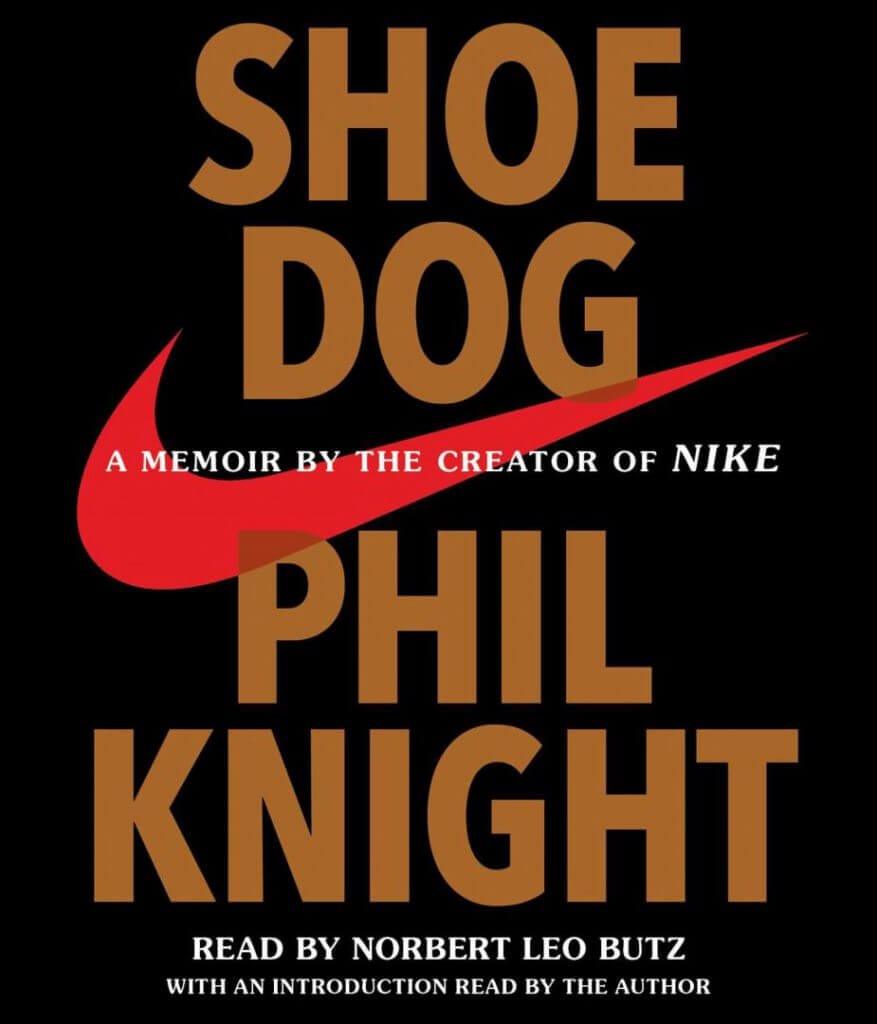Nike is a behemoth of a company, a marketing juggernaut, and one of the world’s strongest brands. Much attention is given to the company’s brand-building genius, design innovation, and focus on data analytics that their supply chain prowess is often not spoken about loudly enough. Underpinning and perhaps responsible for all of Nike’s success is an unparalleled, robust supply chain strategy. If you look up information on Nike’s supply chain, you will find their manufacturing partners spread across 40+ countries and tens of hundreds of factories. But that’s today, over 55 years after the company started. Nike built its formidable supply chain step by step for over five decades. The book Shoedog by Phil Knight, co-founder of Nike, is a classic. The book is brilliantly written – hilarious, instructional, and inspiring. The book is a gritty entrepreneurship story about what it takes to build a multi-generational purpose-led business. But within the pages is also the story of how Nike’s supply chain started and evolved.

I summarize that supply chain story, the birth and evolution of the strategy, and tactics here for you. Not all moves may be relevant for your company to emulate. But the Nike strategy is timeless, and the progression and edits in their strategy over time are particularly interesting to note.
Start with a narrow product group and a narrow supplier list.
While diversification in the product set, countries of origin, and suppliers is supply chain strategy 101, a company’s early years need focus. Diluting attention across multiple products and sources can be a resource and energy drain. Nike started in one country, Japan, and with one supplier. Nike also began distributing goods in the mid-1960s that were not entirely their design innovation. While they contributed to the early design ideas, the supplier was as (perhaps more) influential in drafting and defining the early materials and designs. Nike got into battles later to assert their independence and survived a hostile supplier takeover bid. Still, the early sourcing from the supplier’s off-the-shelf designs allowed Nike to focus on distribution and brand building. Once they established distribution channels and a cult brand following, they also innovated their designs.
The early suppliers are vital partners. Those relationships need all the attention and more.
It seemed like Phil Knight was making a trip into Japan every second page in the Shoedog book. Not only did he make countless trips into the factory, but he also invested time and energy getting to know the people and personalities running the factory making his shoes. In the digital world, getting to know your suppliers well may be accomplished with fewer trips across the globe. Still, the tenet here is the importance of the partnership with suppliers, especially in the first decade of company foundation building. The suppliers are vital partners; they are extensions of the core team, and leaning in to earn and build a mutual channel of trust is paramount to any subsequent success the company enjoys.
Start with quality, then optimize for price.
There is no supply chain without a loyal customer base and without distribution channels that guarantee predictable revenue. There is no building a loyal customer base if there is a compromise on quality. There must be a balance with the pricing, of course, and margins, but formative years are better-served over-indexing on the product quality. Nike’s early history teaches us this lesson. The company stayed in Japan, and with 100% of their production coming out of Japan in the early years, they paid a higher price for the products. And while they still had quality issues on some designs in the early years, the company built a loyal following of their products’ design and quality superiority by and large.
Build distribution channels, then innovate and diversify on design.
There are some incredible reading sections in Shoedog where Bill Bowerman ruins his wife’s kitchen appliances iterating on molding shoe soles towards the perfect shoe design. I will not say more here and ruin the book for you should you choose to pick it up and read (which you should!). As Nike gained and solidified its status as a revolutionary shoe brand and built successful retail outlets, it started to take charge of its designs, amplifying new shoe design releases in variety and frequency. Balancing the timing of when to spread energy across new products is an art and science, and one Nike seems to have gotten right in the retrospective view. But the diversification itself did not happen overnight and was a phased process. Nike spread its wings not just across enviable shoe innovations, but as brand and distribution got further solidified, they also branched into apparel in the 1980s.
The multi-sourcing strategy eventually becomes essential to success, but companies need to build strong relationships alongside such supplier growth.
Nike ultimately branched into China and other countries across the world. Spreading risks and lowering costs with high quantities was key to building a sustainable business. Successfully executing a multi-sourcing strategy, as exemplified by Nike, should be done when your company has a larger team to manage the growing relationships. Phil Knight traveled with and trained his executives to oversee their varied partnerships. In the book, I noticed that the new connections were managed by Phil’s executive team and not junior staff. And he spent a lot of time teaching and cascading down the value of building relationships with the new factories. Strong partnerships are built off relationships, not transactions. This is a timeless rule from Shoedog and one I cannot emphasize enough to build robust supply chains no matter the extent of digital transformation.
Vertically integrated is a competitive advantage.
As Nike expanded its supply chain footprint, the company bought and ran its own factories in the United States. This was a brilliant move, and in my opinion, it was crucial for being recognized as an early leader in design innovation. The factory helped them experiment and release an exponentially higher number of new designs since they were in control of the sample making process. Nike noticeably did not delegate the responsibility of running their local factory(ies) to new or junior managers. Instead, one of Phil’s most trusted executives supervised the local factory and the designs released from there. This onshoring, vertically integrated move proved to be a huge competitive advantage for Nike. It is perhaps impossible for early-stage companies to make the kind of investment required to purchase and run their own manufacturing plants. But once companies achieve scale, investing in a local arm owned and operated by the company can provide unassailable competitive advantages.
There is no supply chain without a supply chain finance strategy.
I love how much of the Shoedog book is dedicated to the financing perils Nike faced for almost two decades ahead of achieving a semblance of stability. The lesson for brand builders is that there is no supply chain without a supply chain finance strategy. The great thing about 2021 versus 1965 or 1975 is that digital platforms offer creative solutions to financing purchase orders and invoices for brands and factories, both at affordable rates. But there must be someone senior inside the company in charge of putting together a financing strategy that can support the inventory purchase and supplier bills while the foundation of the supply chain is built. The leader must negotiate supplier terms, establish relationships with financing partners that can advance against customer purchase orders and receivables, line of credit products with potential for line amount increases, and more.
Design-supplier combinations will fail as you innovate rapidly.
Nike was stellar at innovation. It accomplished differentiation through new permutations of materials and designs. The Nike story also teaches us that the more you innovate, the more failures you will have. Nike had several design duds and failed supplier relationships along the way. The failed relationships were sometimes due to broken trust, and others due to quality issues and an inability to produce a design specification. I believe this failure is a good sign of a strong and growing supply chain. If your company wants to innovate (because you will die if you do not innovate) rapidly, failure is a part of every company’s Darwinian evolution. As your company scales and stumbles along the way, it may help to know and read that Nike also had massive failures along its path to enormous success.
It takes time.
Building a conglomerate of a company takes time, and hence building and growing the supply chain that supports such a company takes time. Nike’s supply chain today seems unbeatable, but it took them 50+ years of trial and error to get to unstoppable. I am sure Nike’s supply chain executives will continue to iterate on their supply chain strategy for decades to come since transition and evolution is the answer to surviving and thriving. Having said that, time and patience alone do not guarantee solutions. Expanding the strategy from simple to complex and adapting to new designs, suppliers and countries takes the right timing, experience, and planning.
Find a prodigious, improbable dream that seems worthy, fun, and a good fit, and chase it with an athlete’s single-minded dedication and purpose.
Phil Knight, Founder, Nike.
Originally published to Supply Chain Sunday

Suuchi Ramesh founded Suuchi Inc. 4 years ago after a 12 year career in technology and predictive data analytics. Before starting Suuchi Inc., Suuchi had scaled the B2B side of multiple tech startups from zero to nearly $30 million. Suuchi now plans to do the same with the GRID. The GRID is a mobile-first solution for transparent collaboration, real-time updates, and data analytics pulled straight from the supply chain. Learn more about Suuchi.
